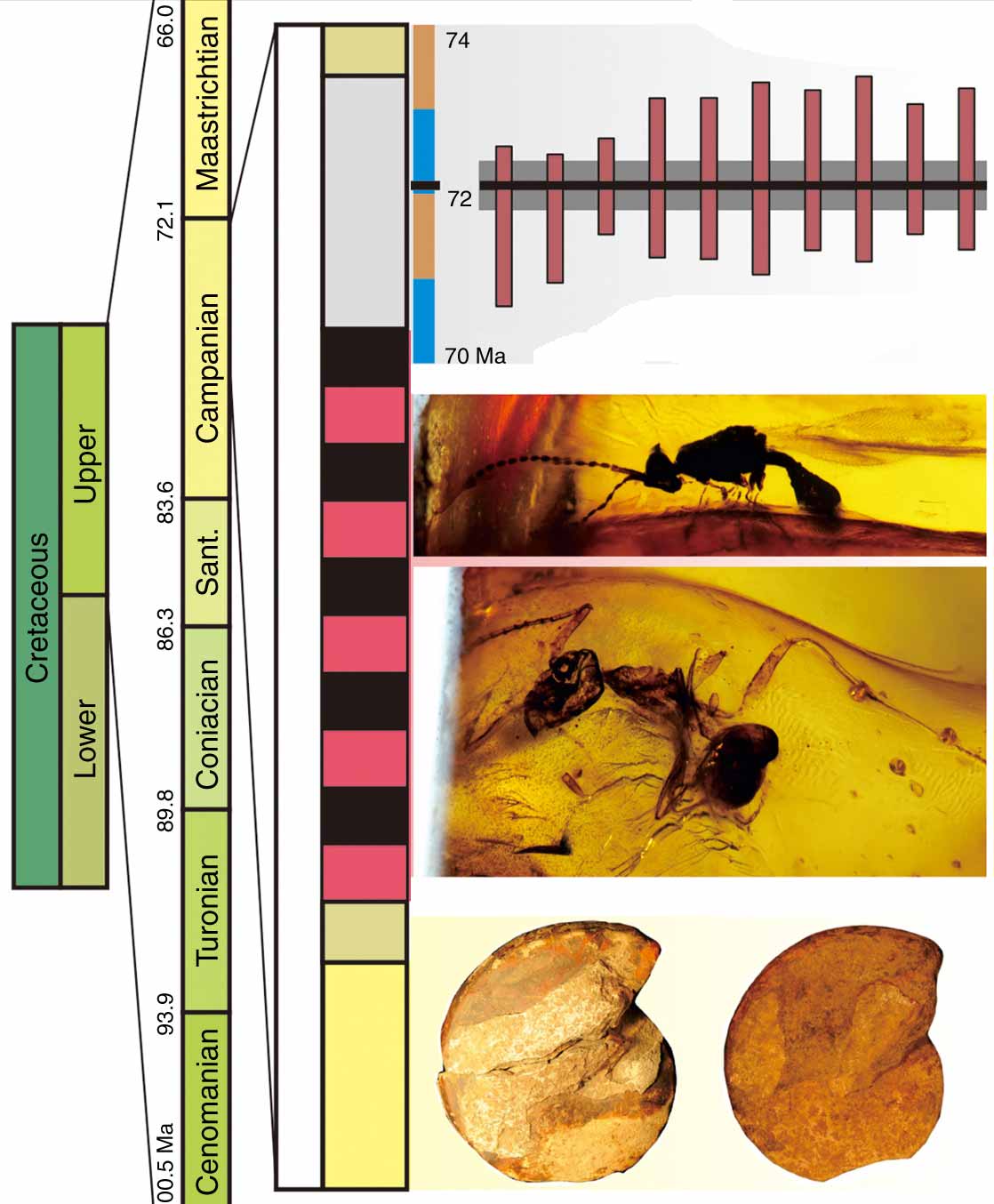|
Project title: Cretaceous Resin Event: a
paleoenvironmental approach
Coordinator: Xavier DELCLÒS MARTÍNEZ
(Universidade de Barcelona,Spain)
Sponsor: Spanish Government R&D projects
 |
Cretaceous sedimentary basins from the study
region (proto-Atlantic and western Tethys) will
be characterized by: i) Generating and gathering
geological, geochemical and taphonomic data from
sedimentary basins associated to amber outcrops
and other spatial-temporally associated basins,
all of them within the study area. Stratigraphic
columns will be analyzed, and facies will be
described in detail, especially those
paleoenvironmentally and paleoecologically
informative (e.g., with coal, evaporite or
tillite content), as well as other
paleoenvironmental indicators (e.g.,
carbonate/siliciclastic and mudstones/sandstones
ratios, fusinite, etc). ii) Creating a
Cretaceous Paleoenvironmental DataBase (CPDB)
with the data shown in 1.ii. The study area will
be paleoenvironmentally and paleoclimatically
characterized by using the geographic
information system program Arc-GIS through: i)
Creating paleogeographic maps for the Early and
Late Cretaceous in the study area (=source maps)
based on paleogeographic maps of reference
(Blakey, 2000, 2017; Scotese, 2013),
complemented with additional publications within
the study area. Seaways and oceanic
paleocurrents will be mapped; ii) Mapping the
CPDB data into the two source maps; iii)
Reconstructing the sedimentary basins and main
paleotopographic reliefs (erosive limits, source
areas, depocenters, etc.) from the two source
maps; iv) Based on the layer overlapping in the
two source maps, obtaining and interpreting
thematic maps from the study area with
paleoclimatic and paleoenvironmental
implications: aeolian paleocurrents to infer the
atmospheric circulation, eustatic level
characterization and onlap coastal variations,
climatic zonation reconstruction, etc; v) With
the CPDB at an advanced stage, we aim to contact
with GCM specialists to propose a collaboration
to use GCMs and other similar models in our
study region to, in future projects, infer
parameters such as the average temperature and
precipitation to shed further light into the
CRE. Personnel involved: these tasks will be
coordinated by X. Delclòs (UB team) with the
participation of N. Meléndez, B. González, D.
Azar, D. Grimaldi (all UB team), V. Perrichot
(France) M. Holz (Brazil), D. Uhl (Germany), E.
Cadena, M.M. Solórzano Kraemer, and R. Pérez de
la Fuente (all UB team), as well as E. Barrón,
E. Peñalver, and C. Jaramillo (IGME team). Dr
Sibelle Maksoud (Lebanese outcrops) will also
collaborate. |